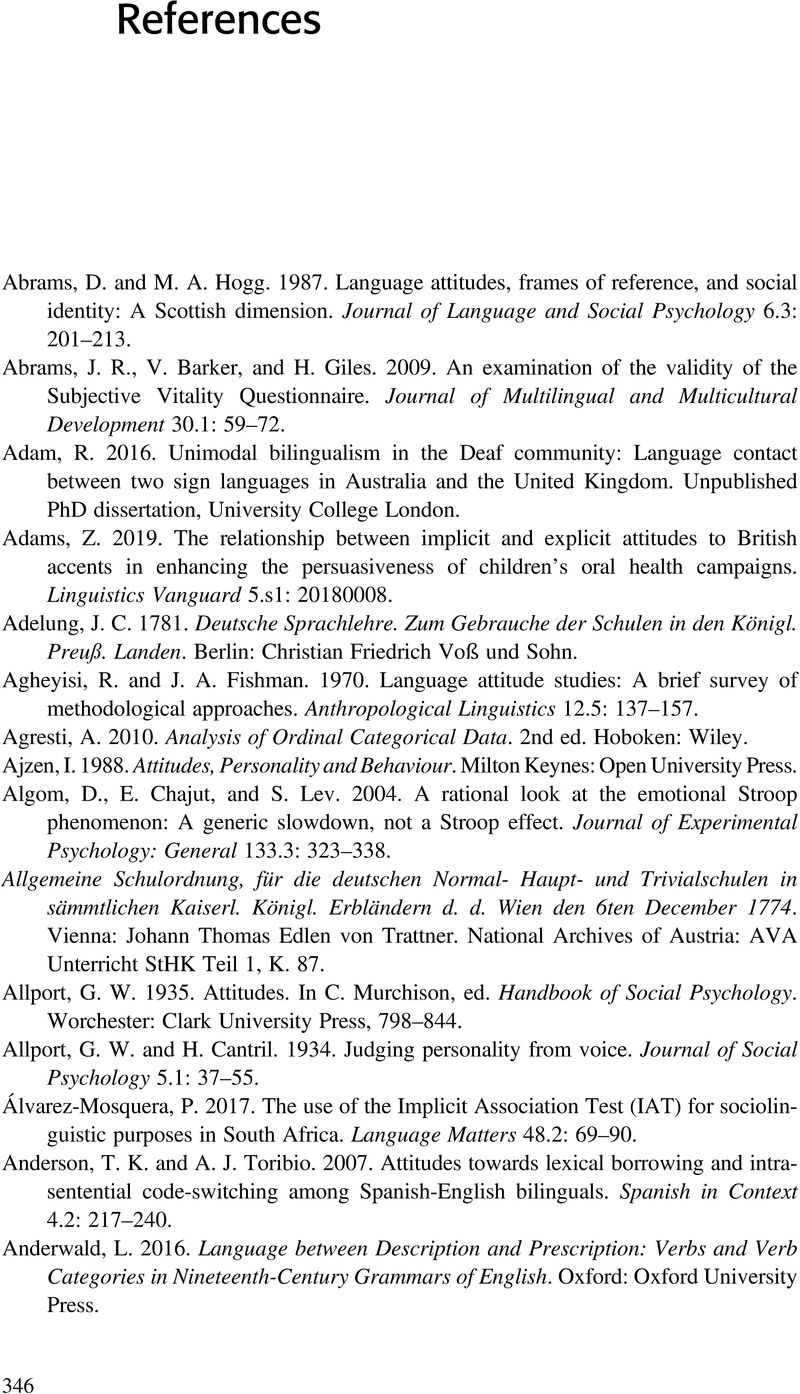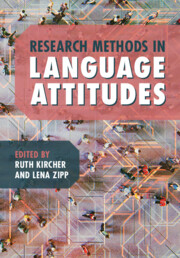Book contents
- Research Methods in Language Attitudes
- Research Methods in Language Attitudes
- Copyright page
- Contents
- Figures
- Tables
- Contributors
- Foreword
- Acknowledgements
- 1 An Introduction to Language Attitudes Research
- Part 1 Analysis of the Societal Treatment of Language
- Part 2 Direct Methods of Attitude Elicitation
- Part 3 Indirect Methods of Attitude Elicitation
- Part 4 Overarching Issues in Language Attitudes Research
- References
- Index
- References
References
Published online by Cambridge University Press: 25 June 2022
- Research Methods in Language Attitudes
- Research Methods in Language Attitudes
- Copyright page
- Contents
- Figures
- Tables
- Contributors
- Foreword
- Acknowledgements
- 1 An Introduction to Language Attitudes Research
- Part 1 Analysis of the Societal Treatment of Language
- Part 2 Direct Methods of Attitude Elicitation
- Part 3 Indirect Methods of Attitude Elicitation
- Part 4 Overarching Issues in Language Attitudes Research
- References
- Index
- References
Summary

- Type
- Chapter
- Information
- Research Methods in Language Attitudes , pp. 346 - 404Publisher: Cambridge University PressPrint publication year: 2022



